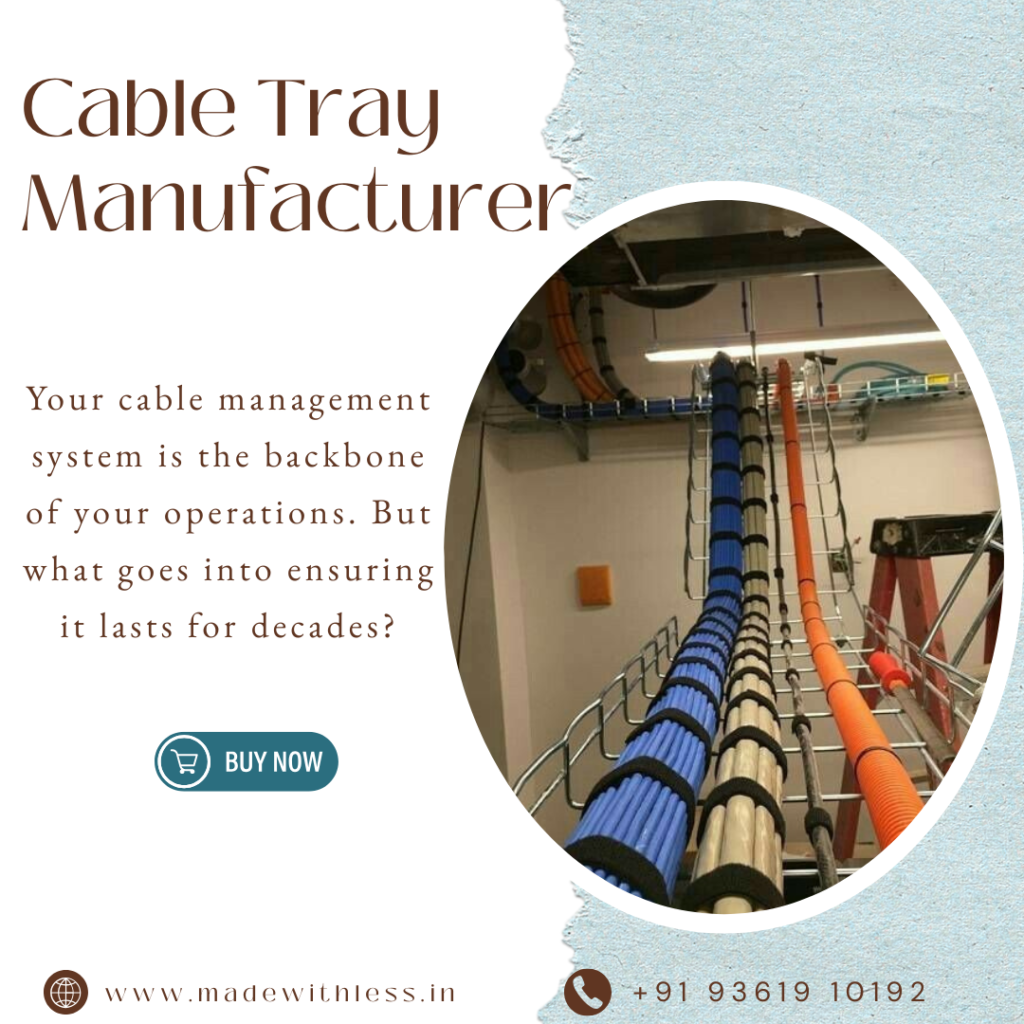In the complex world of electrical infrastructure, cable trays are the unsung heroes. They are the robust skeletons that organize, support, and protect vital power and data cables in everything from industrial plants and data centers to commercial buildings. But not all cable trays are created equal. The journey from a raw sheet of steel or aluminum to a reliable, long-lasting cable management system is a meticulous process.
So, how does a reputable Cable Tray manufacturer guarantee that their products can withstand harsh environments, heavy loads, and the test of time? Let’s break down the journey from design to delivery.

Phase 1: The Blueprint for Strength – Intelligent Design
Durability isn’t an afterthought; it’s engineered from the very beginning. The design phase is where a Cable Tray manufacturer lays the foundation for a product’s entire lifecycle.
- Material Selection: The first critical decision is choosing the right material. A leading Cable Tray manufacturer will offer options like:
- Pre-Galvanized Steel: Cost-effective for indoor, dry environments.
- Hot-Dip Galvanized Steel: Immersed in molten zinc, this process provides a thick, durable coating that offers superior corrosion resistance, making it ideal for harsh industrial or outdoor settings.
- Stainless Steel (304 & 316): The gold standard for extreme environments—food processing, chemical plants, and coastal areas—where corrosion resistance is non-negotiable.
- Aluminum: Naturally corrosion-resistant and lightweight, perfect for applications where weight is a concern, such as in data centers.
- Structural Engineering: Using advanced CAD software, engineers design the tray’s geometry for optimal strength-to-weight ratio. The depth of the side rail, the pattern of the rungs, and the thickness of the material are all calculated to meet or exceed industry standards like NEMA VE 1 and IEC 61537, ensuring the tray can handle the specified load capacity without sagging or failing.
Phase 2: The Art of Fabrication – Precision and Protection
Once the design is finalized, the blueprint comes to life on the factory floor. This is where quality control is paramount.
- Precision Cutting and Punching: Sheets of metal are cut and punched with high-precision machinery. Consistent, clean holes and edges are crucial, as rough or uneven edges can become weak points and damage cable insulation.
- Robotic Welding: For ladder-type trays, robotic welding ensures every joint is consistent, strong, and uniform. This eliminates human error and creates a structurally superior product.
- The Corrosion Defense: Galvanizing: For hot-dip galvanized trays, the fabricated trays are immersed in a bath of molten zinc at around 850°F (450°C). This creates a metallurgical bond, coating the entire tray—inside and out—in a protective layer that will not peel or flake. This step is what separates a durable Cable Tray manufacturer from the rest.
Phase 3: Rigorous Quality Assurance – Testing for Excellence
Before a single cable tray leaves the facility, it must pass a series of rigorous tests. A trustworthy Cable Tray manufacturer doesn’t just assume quality; they verify it.
- Load Testing: Sample trays are subjected to loads that exceed their rated capacity to ensure they can handle real-world stress without permanent deformation.
- Coating Thickness Tests: Using specialized gauges, technicians measure the thickness of the galvanized or powder-coated finish to ensure it meets the specified corrosion protection standards.
- Dimensional Checks: Every batch is checked for consistency in dimensions to guarantee easy installation and compatibility with fittings and accessories.
Phase 4: Careful Packaging and Delivery – The Final Safeguard
The commitment to durability doesn’t end when the tray comes off the production line. How a product is packaged and delivered is the final step in preserving its integrity.
- Secure Packaging: Cable trays are typically bundled and strapped securely to prevent bending or damage during transit. They are often wrapped in protective film or placed on pallets to shield them from the elements and handling.
- Clear Labeling: Each bundle is clearly labeled with product type, size, material, and batch number. This ensures traceability and helps installers quickly identify the components they need on a busy job site.
Conclusion: Durability is a Promise, Not a Feature
Choosing a cable tray is a long-term investment in the safety and reliability of your electrical system. By understanding the comprehensive process—from the intelligent design and material science to the precision fabrication and rigorous testing—you can appreciate the value a dedicated Cable Tray manufacturer brings to your project.
It’s this end-to-end commitment to quality that ensures the cable trays you install today will deliver unwavering performance for decades to come. When you partner with a manufacturer that prioritizes durability at every stage, you’re not just buying a product; you’re investing in peace of mind.
